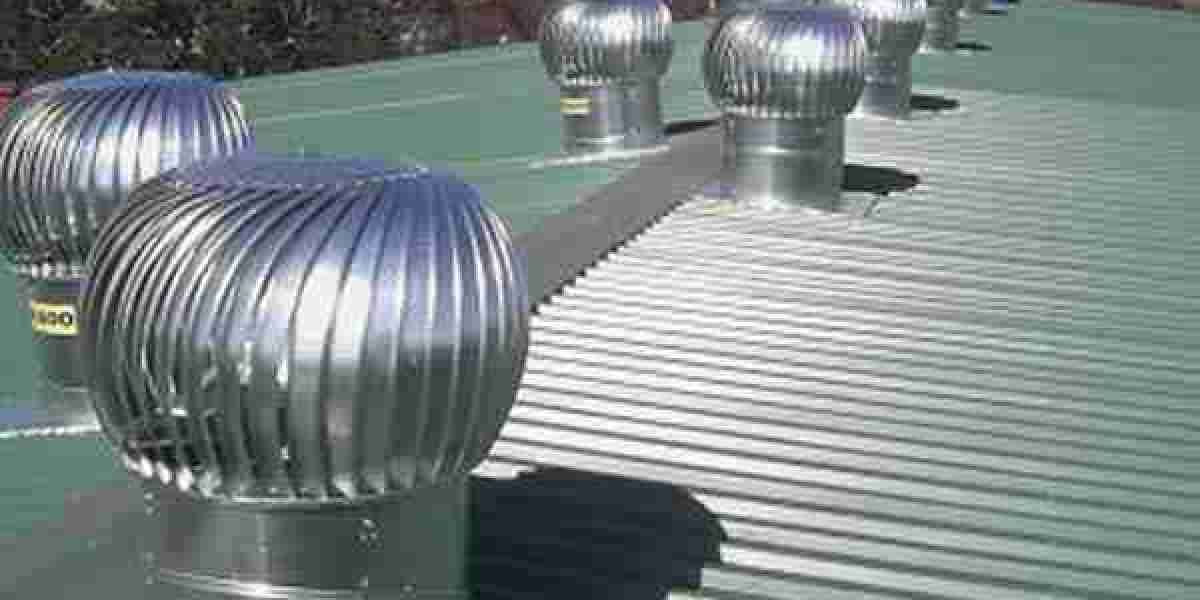In the fast-paced world of warehousing, businesses are under constant pressure to maintain optimal conditions for inventory storage while maximizing operational efficiency. One often overlooked factor that plays a critical role in this process is warehouse ventilation. Effective ventilation systems help regulate temperature, humidity, and air quality, all of which directly impact the preservation of both inventory and equipment. Poor ventilation, on the other hand, can lead to spoilage, deterioration, and costly equipment failures, potentially affecting a company's bottom line.
This article explores the key ways in which warehouse ventilation influences inventory and equipment preservation, and why maintaining proper ventilation is essential for long-term success in warehouse operations.
The Role of Ventilation in Inventory Preservation
Warehouse inventory comes in all shapes, sizes, and types—ranging from perishable goods, electronics, and chemicals to clothing, machinery parts, and more. Each of these items has specific storage requirements, particularly related to temperature, humidity, and air quality. Proper ventilation is a critical component in maintaining the optimal conditions for each type of inventory, ensuring that it remains in good condition throughout its storage period.
1. Temperature Control for Perishable Goods
Perishable goods, such as food and pharmaceuticals, require strict temperature control to prevent spoilage. Excessive heat or cold can accelerate the breakdown of organic materials, resulting in wasted inventory and potential health risks for consumers. Ventilation systems play an essential role in regulating the warehouse’s internal temperature, ensuring it remains within the required range for different types of perishable goods.
For example:
- Cold storage areas for food and medicine depend on proper airflow to distribute cool air evenly. Insufficient ventilation in these areas can result in “cold spots,” where certain sections of the warehouse are colder than others, potentially compromising the quality of the products stored in these areas.
- Humidity control is equally important for perishable inventory, particularly in environments like meat processing plants or warehouses storing fruits and vegetables. Excessive moisture in the air can cause mold growth, while low humidity can lead to dehydration and product deterioration.
Proper ventilation in temperature-controlled storage areas helps prevent these issues, reducing the risk of inventory loss and maintaining quality.
2. Preventing Mold and Mildew Growth
Mold, mildew, and other fungal growths thrive in warm, damp environments. If warehouse ventilation is inadequate, humidity levels can rise, creating the perfect conditions for mold to develop. This is especially problematic for inventory like clothing, paper products, electronics, and chemicals, which can become damaged when exposed to excess moisture or mold.
By maintaining consistent airflow and humidity control, ventilation systems help prevent mold growth and ensure that inventory is stored in safe, dry conditions. In warehouses storing wood, paper, and textiles, for example, moisture control is crucial to prevent material degradation, discoloration, and odors.
3. Protecting Sensitive Inventory (Electronics, Chemicals, and Documents)
Certain types of inventory, such as electronics, chemicals, and sensitive documents, require specific conditions to prevent deterioration. Without adequate ventilation, these items can degrade due to heat, humidity, or exposure to volatile gases.
- Electronics: Heat buildup in warehouses storing electronics can lead to equipment malfunctions or damage. Proper ventilation prevents excessive heat from accumulating, ensuring that sensitive components like circuit boards, batteries, and screens are protected.
- Chemicals: Many chemicals require storage in well-ventilated spaces to avoid dangerous fumes or the build-up of hazardous gases. Poor air circulation in these areas could lead to chemical reactions, corrosion of containers, or even hazardous leaks.
- Documents and Paper Goods: Paper-based inventory is vulnerable to high humidity and temperature fluctuations, which can cause yellowing, brittleness, or warping. Ventilation helps maintain a consistent environment, protecting valuable records, books, or archives from damage.
By providing adequate airflow and regulating temperature and humidity, ventilation systems ensure the integrity of sensitive inventory, reducing the risk of loss or damage.
The Impact of Ventilation on Equipment Preservation
In addition to preserving inventory, proper ventilation is essential for the longevity and efficiency of warehouse equipment. Over time, poor air circulation can lead to overheating, excessive wear, and equipment failure. This, in turn, can cause operational disruptions, increased maintenance costs, and equipment replacement expenses.
1. Preventing Overheating of Equipment
Warehouse equipment, such as forklifts, conveyors, automated systems, and HVAC units, generates heat during operation. If ventilation is insufficient, the accumulated heat can lead to overheating of equipment, which can shorten its lifespan, cause malfunctions, and increase the need for maintenance.
For example, in areas where machinery is operating continuously (such as automated picking systems or conveyor belts), maintaining airflow around the machines helps prevent them from becoming too hot. This reduces the strain on the machinery, ensuring it operates smoothly and efficiently over the long term.
2. Reducing Dust Build-up
Dust and other airborne particles can accumulate on machinery, leading to wear and tear on moving parts. In warehouses where products such as paper, textiles, or construction materials are stored, dust can pose a significant risk to equipment. Ventilation systems can help mitigate dust accumulation by ensuring a continuous flow of air that disperses and removes these particles from the workspace.
By regularly removing dust from the environment, proper ventilation helps maintain cleaner equipment, reducing the likelihood of malfunctions and extending the lifespan of machinery.
3. Maintaining the Health of HVAC Systems
A warehouse’s HVAC (heating, ventilation, and air conditioning) system itself is vulnerable to the effects of poor ventilation. Without proper airflow and regular maintenance, HVAC components can become clogged with dust, debris, or moisture, which can reduce their efficiency and increase the risk of breakdowns. Ensuring that the HVAC system is properly ventilated, with clean ducts and filters, helps improve its efficiency and longevity, preventing costly repairs or replacements.
Best Practices for Warehouse Ventilation to Protect Inventory and Equipment
To optimize warehouse ventilation for inventory and equipment preservation, businesses can implement the following best practices:
- Regular Maintenance of Ventilation Systems: Periodic inspections, cleaning of ducts and filters, and checking for blockages ensure that ventilation systems are functioning optimally.
- Zoning and Temperature Control: For warehouses that store a variety of products, zoning the ventilation system can ensure that each area is maintained at the appropriate temperature and humidity levels for the inventory it houses.
- Humidity Management: Install dehumidifiers or humidity control systems in areas prone to high moisture levels to prevent mold growth and product degradation.
- Airflow Optimization: Ensure that air flows freely through the warehouse, particularly in storage areas, to prevent the accumulation of heat and moisture. This can be achieved through ceiling fans, exhaust vents, or strategically placed intake ducts.
- Use of Energy Recovery Systems: Implementing heat recovery or energy recovery ventilation systems can improve energy efficiency while ensuring proper air exchange in temperature-sensitive areas.
Conclusion
Warehouse ventilation is a critical component in preserving both inventory and equipment. By controlling temperature, humidity, and air quality, businesses can protect valuable goods, prevent mold growth, and ensure the longevity of sensitive equipment. Proper ventilation also reduces the risk of costly damage and operational disruptions, leading to improved warehouse efficiency and reduced maintenance costs.
Investing in a robust ventilation system not only ensures compliance with health and safety regulations but also helps to maintain the integrity of inventory and equipment, ultimately safeguarding a business’s assets and improving overall productivity.




